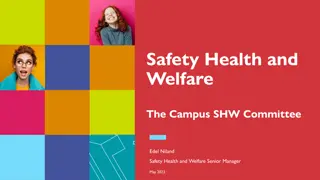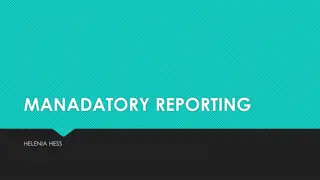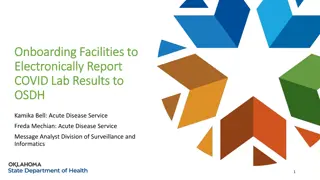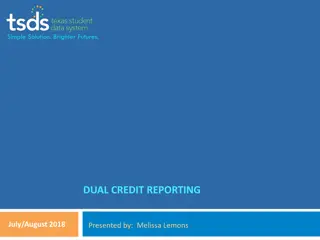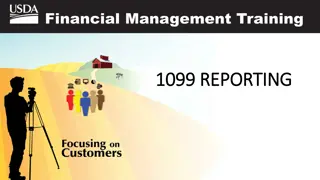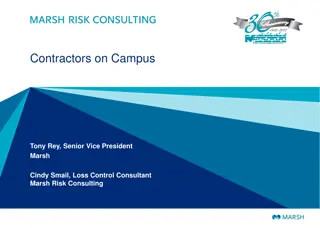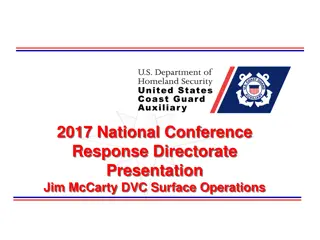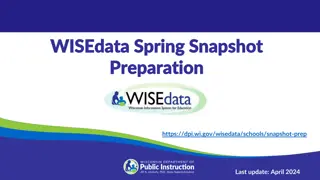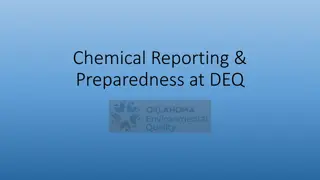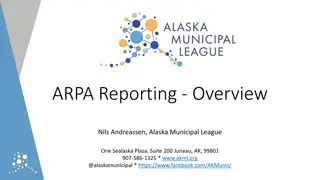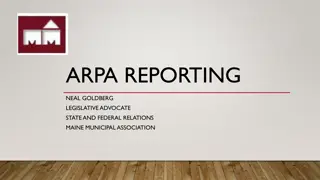Ensuring Safety in Research: Guidelines and Reporting
Safety in research is crucial for protecting participants. This content covers key definitions, safety reporting responsibilities, regulatory guidelines, adverse event monitoring, and definitions related to adverse events in clinical trials. Understanding these aspects is essential for safeguarding the rights and well-being of research subjects.
Download Presentation

Please find below an Image/Link to download the presentation.
The content on the website is provided AS IS for your information and personal use only. It may not be sold, licensed, or shared on other websites without obtaining consent from the author.If you encounter any issues during the download, it is possible that the publisher has removed the file from their server.
You are allowed to download the files provided on this website for personal or commercial use, subject to the condition that they are used lawfully. All files are the property of their respective owners.
The content on the website is provided AS IS for your information and personal use only. It may not be sold, licensed, or shared on other websites without obtaining consent from the author.
E N D
Presentation Transcript
ACADEMY FOR RESEARCH PROFESSIONALS 2019 SPRING SAFETY of the SUBJECT
Safety of the Subject Key definitions Identifying, documenting and reporting Investigator reporting responsibilities How are research participants protected? Safety related roles in clinical research
Safety of the Subject BACKGROUND 45 CFR 46 & ICH E6 GCP Provides Guidance and Standards Rights, safety, and well-being of subjects Roles and Responsibilities of Investigators and Research Staff Study conduct and protocol management Safety reporting Documentation and Record Keeping
Safety Reporting Regulatory Guidelines Adverse Events (AEs) monitoring is critical to the patient s safety (i.e. human subjects protection) and data integrity Enhance patient safety in clinical trials by improving the quality of safety reports submitted to the FDA under the DHHS Final Rule lays of clear definitions/standards critical safety information will: Accuratelyreported to the agency Minimize uninformative reports Enhance reporting meaningful, interpretable information on humans
Safety Reporting Adverse Events (AEs) Multiple clinical terms used for AEs: Toxicity Side effect Acute or late effect Complication All directed to a change possibly caused by a treatment /or intervention All terms above imply that an intervention caused the event which is NOT the definition of an AE
Safety Reporting Universe of Adverse Events Relationship between: Adverse Events (AEs) Suspected Adverse Reactions (SARs) Adverse Reactions **Adverse Events of Special Interest (AESI)
Safety Reporting Definitions 1. Adverse Event (AE) 2. Suspected Adverse Reaction (SAR) 3. Adverse Reaction (AR) 4. Adverse Event of Special Interest (AESI) 5. Unexpected 6. Serious 7. Life-Threatening
Safety Reporting Definitions FDA 21 CFR 312.32 and 312.64(b) 1. Adverse Event (AE) means: any untoward medical occurrence associated with the use of a drug in humans, whether or not considered drug related (FDA 21 CFR 312.32(a)) Adverse Experience is an Adverse Event any unfavorable and unintended sign in a human subject (e.g. an abnormal laboratory finding ), symptoms, or disease temporally associated with the use of the drug or with a subject s participation in the research and Does not imply any judgment about Causality. Can arise with any use of a drug (e.g. off-label use, use in combination with another approved drug), with any route of administration, formulation, or dose, including an overdose.
Safety Reporting Definitions FDA 21 CFR 312.32 and 312.64(b) 2. Suspected Adverse Event (SAR) means: any adverse event for which there is a reasonable possibility that the drug caused the event (FDA 21 CFR 312.32(a)) Suspected Adverse Reaction Implies a lesser degree of certainty about Causality than Adverse Reaction Adverse Event caused by a drug Subset of Adverse Events where is a reasonable possibility that the drug caused the event Requirement to Report a SAR: sponsor needs to evaluate the available evidence and make the judgement about the likelihood that the drug actually caused the adverse event NOTE: The FDA reasonable possibility causality standard is consistent with (ICH) E2A guidance with respect to who is responsible for making the judgment. ICH E2A guidance recommends judgment is based on either the investigator s or the sponsor s opinion.
Safety Reporting Definitions FDA 21 CFR 312.32 and 312.64(b) 3. Adverse Reaction (AR) means: any adverse event caused by a drug (FDA 21 CFR 312.32(a)) Adverse Reactions Subset of all adverse events There is a reason to conclude that the drug caused the event
Safety Reporting Definitions 4. Adverse Event of Special Interest (AESI) means: serious or non-serious adverse that is one of scientific and medical concern specific to the sponsor s product for which ongoing monitoring and rapid communication by the investigator to the sponsor can be appropriate. Adverse Event of Special Interest is an Adverse Event Events or symptoms thought to [potentially] be associated with the investigational compound or disease under study Does not imply any judgment about Causality. Can arise with any use of a drug (e.g. off-label use, use in combination with another approved drug), with any route of administration, formulation, or dose, including an overdose.
Safety Reporting Definitions (FDA 21 CFR 312.32(a)) 5. Unexpected means adverse event (AE) or suspected adverse reaction (SAR) is considered UNEXPECTED Examples: Not listed in the Investigator Brochure (IB) Not listed at the Specificity or Severity previously seen If an IB is not required or available Is not consistent with the Risk Information described in the general investigational plan, protocol or elsewhere in the current application
Safety Reporting Definitions 6. Serious means: any adverse event (AE) or suspected adverse reaction (SAR) is Serious if, in the view of either the investigator or sponsor, it results in any of the following outcomes: Death, or A life-threatening adverse event, or Inpatient hospitalization or prolongation of existing hospitalization, or Substantial disruption of the ability to conduct normal life functions, or Persistent or significant incapacity, or Congenital anomaly or birth defect Important medical events that may not result in death, be life-threatening, or require hospitalization may be considered serious when, based upon appropriate medical judgment, they may jeopardize the patient or subjects and may require medical or surgical intervention to prevent one of the outcomes listed in the definition.(FDA 21 CFR 312.32(a)
Safety Reporting Definitions 7. Life-Threatening means: any adverse event (AE) or suspected adverse reaction (SAR) is Life-Threatening if, in the view of either the investigator or sponsor, its occurrence places the patient or subjects at immediate risk of death. It does NOT include adverse events or suspected adverse event reaction that has occurred in more severe form, might have caused death (FDA 21 CFR 312.32(a) As with the definition of Serious, the determination of whether an Adverse Event is Life- Threatening can be based on the opinion of either the investigator or sponsor. Thus if either believes that it meets the definition of Life-Threatening, for reporting purposes, it is considered Life-Threatening.
Safety Reporting PROTOCOL ADHERENCE Document investigators agreement to follow the protocol (FDA 1572) Adhere to the IRB-approved protocol/protocol amendments Only deviate from the protocol to avoid immediate hazards to subjects Document and report all protocol deviations to the IRB Review ALL study documents to understand the project s definitions for Adverse Event reporting, time to report to agencies - Manual of Procedures (MOP) - Standard Operating Procedures (SOP) - Protocol - Investigator Brochure (IB) - IRB, sponsor, and FDA
Adverse Events Assessment Identify the Adverse Event Report to the Principal Investigator (PI) following protocol adherence Assessment is done by the PI or designated research team member to determine: Severityof event Attributionor Cause of the event The Assessment + Expectedness of the event helps determine the timeliness for reporting to the IRB, sponsor or other regulatory over sight groups.
Adverse Events Assessment Severity Assessment Tools Tools are intended to be an agreed upon terminology for designation, reporting and grading of AEs that occur. Examples: Common Terminology Criteria for Adverse Events (CTCAE) v5.0is used by oncology groups to determine severity of an AE **Grading system with MedDRA codes, grade definition, symptom term http://ctep.cancer.gov/protocolDevelopment/electronic_applications/ctc.htm Cancer Therapy Evaluation Program (CTEP) of NCI developed the original Common Toxicity Criteria (CTC) in 1980 s aiding in recognition and severity grading. Medical Dictionary for Regulatory Activities (MedDRA) System Organ Class (SOC) is a table format listing SOCs alphabetically.
Adverse Events Assessment Assess Attribution or Relatedness Step 1: Establish the Severity of the event Step 2: Find the CAUSE or ATTRIBUTION of the event Is the event related to the study drugs, devices, disease or an underlying preexisting condition ?? It is important to identify what the AE is related to - not merely what it is not related to. Information assists regulatory oversight groups to assess safety and protect human subjects.
Adverse Events Assessment Questions to Determine Cause or Attribution Investigator determines with the input from the research team Use the following questions: What do we know about the drug/therapy/device or classification? What is the temporal relationship of the AE to the study therapy? Does the AE improve or disappear when drug/ therapy is stopped? If the drug/therapy is restarted, does the AE reappear? At the same severity? At the same time point? Is the AE a result of an existing disease signs and symptoms? Is the AE a worsening of baseline symptoms? Is the AE a result of an underlying concurrent medical condition(s) or concurrent medication(s) ?
Adverse Events Assessment Approaches to Determining Attribution (Cause) Cause: Approach #1 Cause: Approach #2 Two Options: Related: Reasonable Causal relationship between the AE and _______________ Five Options: Definite: clearly related to ________ Probable: likely related to _________ Possible: may be related to ________ Unlikely: doubtfully related to ______ Unrelated: clearly not related to ____ Casual relationship between the AE and ____________ Not Related: No Reasonable
Adverse Events Documentation Adverse EventReportingrequirements for your protocol Collect information before begin study drug/or procedures Collect at start of baseline, screen or lead-in period Establish a baseline status Good record of medical history, concomitant meds, allergies Evaluate all Inclusion/Exclusion Criteria 1. 2. 3. 4. Follow Follow Up Up AE to resolution or stabilization is required for AE s that cause: Interruption or discontinuation of study drug or Those that are present at the End of Study Treatment 1.
Adverse Events Documentation Notify subjects of follow up needed per protocol Early Termination Visit Request subjects sign a Release of Information (ROI) to provide referral and event documentation from outside hospitals/or clinics Pursue medical records for ongoing AEs Actively monitor, ensure care for, and document AEs Report AEs to the IRB/Safety Committee and comply with any specific guidance Always follow to resolution or stabilization
Adverse Events Documentation Progress Note 1. All AEs should be documented in the patients medical record (EMR) including any workup or necessary treatment 2. A good Progress Note documenting the AE will contain both good clinical practice (GCP) and good clinical research practice documentation Date the AE began Note: Important to note time (especially with infusions or drug administration reactions) Treatment for AE Note: Example - no treatment needed; further testing to diagnose event; hospitalization; dose reduction; holding of study intervention Event description in enough detail that a CTCAE term or MedDRA grade can be assigned as part of data management activities Attribution of the AE Note: Sort out if there is more than one therapy or drug given
Adverse Events Documentation Progress Note 3. Before documenting AEs, understand how AEs should be collected 4. Prevent bias collection. Patients should not be questioned regarding specific events that might be anticipated while on the study. 5. AEsshould be spontaneously reported from a patient with open ended questions during the examination and evaluation 6. Date AE resolved 7. If ongoing AE worsens or improves in its severity or its relationship to the study drug changes, documentation should continuously be collected
Regulatory Reporting Reports to Regulatory Oversight Groups IRB 1. Routine Report to IRB at time of Annual Continuing Review Minimum brief statement that There has been no unanticipated problems (UPs). Report if AE occurred at expected frequency and level of severity, as documented in the research Protocol, the Informed Consent and Investigator s Brochure (IB) IRBs may require a summary of all AEs report that occurred on the protocol since the past annual review or since start of study May report in table form IRBs may require a summary of all AEs report that occurred on the protocol since the past annual review or since start of study 2. Expedited Necessary for Serious AEs
Regulatory Reporting Safety Reports to Regulatory Oversight Groups FDA The Sponsor will report to the FDA in a summary fashion of all AEs in the annual report required by all IND Exception: if investigator-initiated IND, then investigator responsibility to report to the FDA Local IRB will ask if you had any regulatory agency communication. If Yes then a copy of the report will be requested by your IRB. Institutional Biosafety Committee (IBC) and Office of Biotechnology Activities (OBA) Protocols using recombinant DNA will require annual reports to IBC/OBA OBA will be informed in the annual report required for all recombinant DNA studies.
Regulatory Reporting Safety Reports to Regulatory Oversight Groups Sponsor Completion of the AE CRF if electronic will inform of a routine AE Investigator Completion of the AE CRF if electronic will inform Sponsor of a routine AE Per FDA regulations and according to the protocol reporting timetable, the investigator must Record any non-serious events (enter onto the CRF) Report to the Sponsor Contact the Sponsor when knowledgeable of AE and submission is coming Contact the Medical Director for resources and queries
Regulatory Reporting Expedited Adverse Events Report Forms Expedited Adverse Events Subset of AEs required expedited reporting to regulatory agencies Alias Terms: Serious Adverse Events Serious Adverse Experience Expedited Adverse Events Adverse Drug Reaction
Regulatory Reporting Expedited Adverse Events Report Forms Key Information Reporter information Subject demographics Study agent - date(s)/time given, dose, administration route Event Attribution (Cause) Narrative Summary Investigator signature Life-threatening Or require hospitalization
Regulatory Reporting Expedited Adverse Events Report Forms The Narrative Summary **Most important section of AE summary form Describe the event as if the reader (recipient) of the form does not know anything about the subject or their history Provide background information necessary to assess the event and support the Investigator s attribution (Cause) Description of the Event: Tell a Story Information that describes the event(s) Information that puts the events in perspective-Relevant Subject History Underlying medical conditions; prior surgeries/procedures; family history; recent events that may be a contributing factor Concomitant Medications sponsor specific e.g., subject medical history, other medical conditions
Regulatory Reporting Expedited Adverse Events Report Forms The Narrative Summary Supporting Documentation: Related source documentation should accompany the report Remove ALL patient identifiers on documents When needed to explain the experience Necessary to support the differential diagnoses Sponsor specific not always necessary
Regulatory Reporting Expedited Adverse Events Report Forms What To Do If Only Limited Information Available Contact treating physician/institution Document all conversation in medical record Submit what you have: Most recent clinical evaluation, baseline history & physical Provide plan for obtaining information Provide a summary of the event and treatment date When additional information becomes available amend the report. Provide dated sequalae follow up information Discuss with protocol medical monitor Always have principal investigator sign and date each version. Use only the original version.
Regulatory Reporting Expedited Adverse Events Report Forms Follow Up Reporting Follow-up is required when: There s a change in the cause/or relatedness of the event New information on a death becomes available Requested by the regulatory /or oversight group Follow-up report is NOT required when: AE resolves Resolved date will be noted on the Adverse Event case report form
Regulatory Reporting Expedited AE Reporting REMINDERS Expedited Events are a subset of Adverse Events All information captured on an Expedited Event form MUST be: Presented in the source documents AND Found on the Adverse Event case report form (CRF) Some events that initially appear to meet Expedited Reporting requirements may be exclude from the Expedited Reporting as per the protocol ***The protocol trumps all other reporting requirements.*** All expedited report forms and any response information from the regulatory/oversight group is to be placed in the Regulatory Binder.
Regulatory Reporting Unanticipated Problem (UP) Definition An incident, experience, or outcome that meets all of the following criteria: Nature, severity, or frequency is unexpected for the subject population or research activities as described in the: IRB approved protocol, Supporting documents, and Informed Consent Document (ICD) Related or possibly related to participation in the research Suggests the research may place the subject or others at a greater risk of harm than previously recognized Physical, psychological, economic, or social harm Protocol deviations/violations are UPs need to be reported to IRB Examples: Malfunctioning infusion pump results in drug being given over 15 minutes vs 1 hour even f subject doesn t have AEs Ineligible subject who receives protocol intervention without any Aes subject received more drug (10-times) than per protocol
Regulatory Reporting Unanticipated Problems (UP) OHRP and FDA require that Unanticipated Problems bereported to the IRB OHRP: Written procedures for ensuring prompt reporting to IRB, appropriate institutional officials of any Unanticipated Problems involving risks to subjects or others - 45 CFR 46.103(b)(5) FDA: Follow written procedures for ensuring prompt reporting to IRB, appropriate institution officials, and FDA of any Unanticipated Problems involving risks to human subjects or others - 21 CFR 56.108(b) The Investigator shall also assure that he/she will promptly report to the IRB all unanticipated problems involving risks to human subjects or others- 21 CFR 312.66
Regulatory Reporting FDA Adverse Events that are Unanticipated Problems (UP) IND Safety Report (15-days) Serious and Unexpected Suspected Adverse Reaction Findings from another study/animal/vitro testing Increased rate SARs Regulatory Agencies Change Protocol & ICD Unanticipated Problems (UPs) FDA Report (7-days) Unexpected Fatal OR Life-Threatening (SARs) Days to Report
Regulatory Reporting Correction Action Plan for Unanticipated Problems Revised protocol: Modify Inclusion/Exclusion Criteria to mitigate the newly identified risks Implement additional procedures for monitoring subjects Suspend enrollment of new subjects Terminate the research Informed Consent: Revise the IC document Provide additional information about newly recognized risks to previously enrolled subjects >> Re-consent subjects Inform enrolled subjects Increase monitoring activities Encrypt laptop computers, no identifiable information on laptops Provide training and/or re-training Submit OHPRS and work with appropriate institutional officials
Regulatory Reporting FDA/OBAare looking for an Attribution (Cause) as it relates to an investigational drug/product IRB is looking for Attribution (Cause) as is relates to the research Sponsors may use either one or a combination **This means that an Event that is to be reported to a Sponsor may not necessarily be reported to the IRB or FDA




